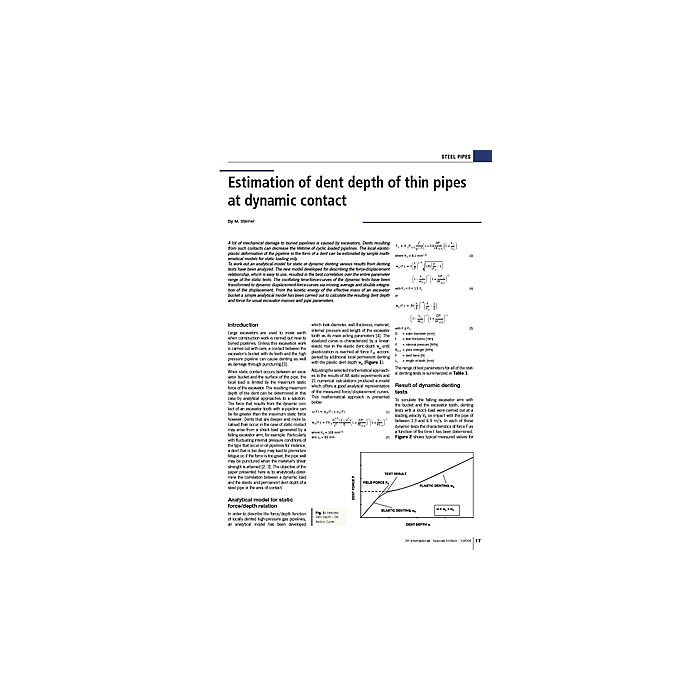Estimation of dent depth of thin pipes at dynamic contact
4,90 €
Auf Lager
Artikelnummer
01252_2008_SP1_04
A lot of mechanical damage to buried pipelines is caused by excavators. Dents resulting from such contacts can decrease the lifetime of cyclic loaded pipelines. The local elastic-plastic deformation of the pipeline in the form of a dent can be estimated by simple mathematical models for static loading only. To work out an analytical model for static or dynamic denting various results from denting tests have been analyzed. The new model developed for describing the force-displacement relationship, which is easy to use, resulted in the best correlation over the entire parameter range of the static tests. The oscillating time-force-curves of the dynamic tests have been transformed to dynamic displacement-force-curves via moving average and double integration of the displacement. From the kinetic energy of the effective mass of an excavator bucket a simple analytical model has been carried out to calculate the resulting dent depth and force for usual excavator masses and pipe parameters.
| Autoren | M. Steiner |
|---|---|
| Erscheinungsdatum | 30.04.2008 |
| Format | |
| Zeitschrift | 3R - Special 1 2008 |
| Verlag | Vulkan-Verlag GmbH |
| Sprache | English |
| Seitenzahl | 4 |
| Titel | Estimation of dent depth of thin pipes at dynamic contact |
| Beschreibung | A lot of mechanical damage to buried pipelines is caused by excavators. Dents resulting from such contacts can decrease the lifetime of cyclic loaded pipelines. The local elastic-plastic deformation of the pipeline in the form of a dent can be estimated by simple mathematical models for static loading only. To work out an analytical model for static or dynamic denting various results from denting tests have been analyzed. The new model developed for describing the force-displacement relationship, which is easy to use, resulted in the best correlation over the entire parameter range of the static tests. The oscillating time-force-curves of the dynamic tests have been transformed to dynamic displacement-force-curves via moving average and double integration of the displacement. From the kinetic energy of the effective mass of an excavator bucket a simple analytical model has been carried out to calculate the resulting dent depth and force for usual excavator masses and pipe parameters. |
Eigene Bewertung schreiben


